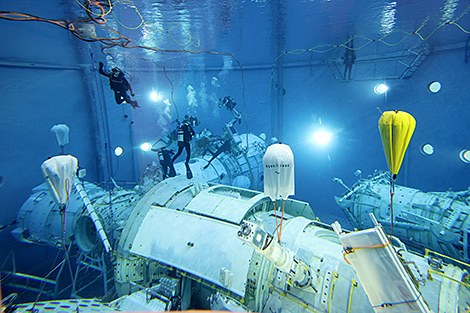Business news
Economic effect of Belarusian remote Earth sensing satellite pointed out

An archive photo
MINSK, 28 December (BelTA) – Earnings from selling the technologies and devices, which were developed in the course of realizing the project, exceed the cost of making the Belarusian satellite and operating the entire remote Earth sensing system by more than $30 million. Sergei Zolotoi, Director of the R&D enterprise Geoinformation Systems of the National Academy of Sciences of Belarus, mentioned it in the latest episode of BelTA’s YouTube project After the Fact: Lukashenko’s Decisions.
Asked whether the launch of a Belarusian satellite in 2012 was economically justified, Sergei Zolotoi said: “At present all the optoelectronic surveillance satellites are used to accomplish national security tasks. You cannot measure the value of these things in economic terms directly.” He explained that in Western countries the government undertakes considerable commitments in the course of creating various satellites and spacecraft. The government guarantees from the start that it will use up 80% of the satellite’s output. “The famous Starlink, SpaceX of Elon Musk… All the projects work according to such a scheme. When you have a guaranteed sale, you can take out a loan and do the work. You have only 15-20% left for commerce [commercial usage of the satellites],” Sergei Zolotoi clarified.
He reminded that when Belarus was launching the first satellite in 2006, there were only 2-3 satellites with the resolution of 2 meters in orbit. And the cost of scanning was about $8 per square kilometer while a satellite like that could scan about 100,000km2 every 24 hours. “If you make calculations and sell even 10% of the scanning output, you'd still recoup investments in two years. But the situation changed drastically in 2012. A lot of satellites became available. The cost of scanning at this resolution is now close to about $0.30. In other words, the cost dropped by more than 20 times. But the cost of making a satellite like that did not change much,” Sergei Zolotoi said.
On the one hand, the space data market becomes more and more competitive every year. But on the other hand, when a critical situation happens, one just cannot buy the data. “At present it is impossible to buy high-resolution space data over the territory of Ukraine or Belarus. You simply cannot buy foreign satellite data. If you have no satellite of your own, then you don't have this data,” Sergei Zolotoi explained.
This is why while evaluating the economic effectiveness of the project to create the first Belarusian satellite, it is necessary to take into account not only a direct commercial effect but indirect ones, too. For instance, earnings from selling the software and technologies. “Earnings from selling the technologies and devices, which were developed in the course of realizing the project, exceed the cost of making the BKA satellite and operating the entire system by more than $30 million,” Sergei Zolotoi stressed.
For instance, thanks to the remote Earth sensing system the Belarusian Emergencies Ministry receives complete information about temperature anomalies, fires, including in neighboring countries. This is why Sergei Zolotoi recalled the time when a major fire happened in the Chernobyl exclusion zone in 2019. Two weeks before the fire got close to Belarusian borders the Belarusian Emergencies Ministry had information about the emergency although the Ukrainian side flatly denied the fire had happened. The relevant work was done near the border in order to stop the fire from spreading just in case. “The fire was stopped virtually at the border. Four hectares were burned on our side and thousands on the Ukrainian side,” the Geoinformation Systems director said.
The development of technologies for evaluating coast erosion in Venezuela is another example of how the data acquired by the remote Earth sensing system is used. “While space technologies act as an engine for developing one’s own production sector, space data can be effectively used to accomplish various tasks for the national economy,” he remarked.







 print version
print version make home page
make home page add to bookmarks
add to bookmarks

